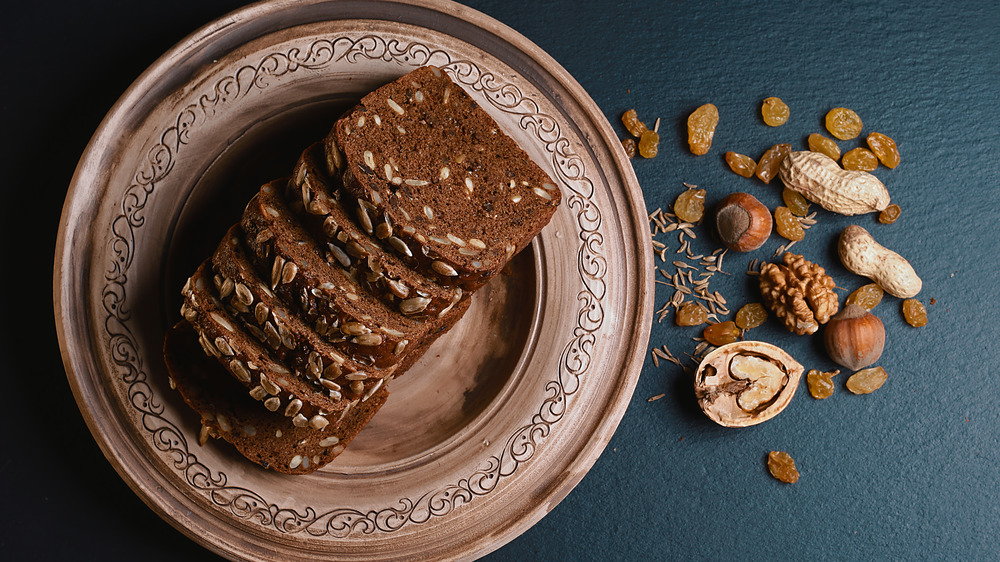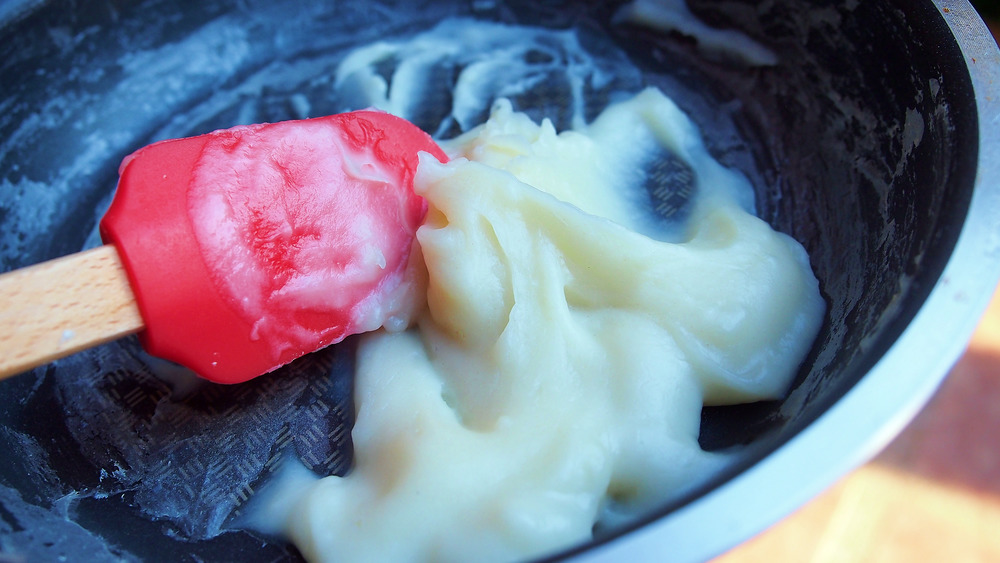Here's What Actually Happens When Hot Water Is Added To Flour
If you've started baking more since the pandemic began, you're definitely not alone. The reason, according to CNBC, is that the process of baking is soothing and meditative, not to mention gratifying and delicious. However, there's one thing you probably haven't even considered when measuring out the flour for your bread recipes: adding boiling water to the mix. After all, "scalded flour" doesn't sound like a good thing at all; it sounds like the result of an amateur mistake that would cause a bitter or burnt taste in the bread and probably kill the yeast, resulting in an unleavened, crispy mess. However, the reality is actually the opposite.
The act of adding boiling water to flour is actually a very common technique used in Scandinavian and Asian baking to pre-cook the starch in the flour so it takes on a jelly-like texture (via Virtuous Bread). The result is a softer, squishier bread without the addition of any extra fat.
How to work with scalded flour
The process of scalding flour is a bit more complex than simply adding boiling water to your bread recipe, as shown in this Virtuous Bread video on Vimeo. Instead, you should heat water to boiling, stir it into a portion of the flour being used, and then leave it to cool completely, often overnight, until it's the texture of wallpaper paste, before then adding it to the remaining flour and other ingredients. In the Scandinavian tradition, this technique is typically used with milled whole grains (as opposed to refined flours), since the process helps with the conversion of starches to sugars, which will result in a nice, subtly sweet taste to compliment the strong or sour flavors of those unrefined grains (via The Rye Baker).
If you're more interested in scalding refined flour, you should instead look to a process called tangzhong, which is more typically used in countries like China, Japan, and Malaysia. It requires taking about a third of the flour in the bread recipe and adding five times its weight in liquid (much more than the flour could typically absorb), then cooking that mixture until it forms a wet gel. This version of scalding flour is less about flavor and more about pre-gelatinizing the starches so they can hold onto more liquid (via King Arthur Baking). Because of the added liquid, the resulting loaves or buns will be especially chewy and moist, plus they will have the added benefit of staying fresh for longer.

